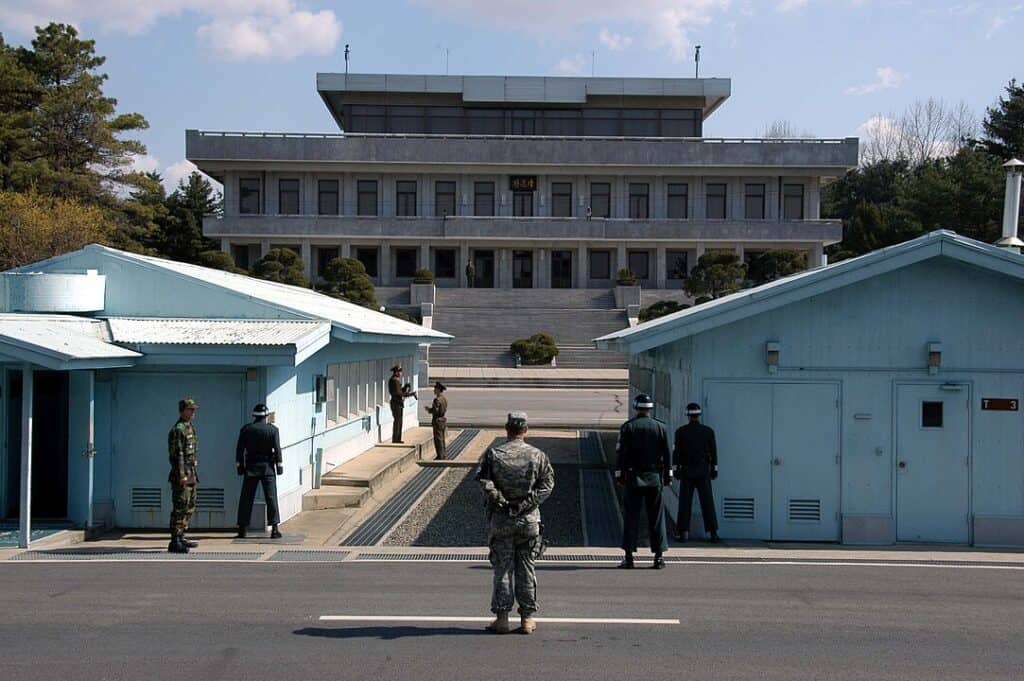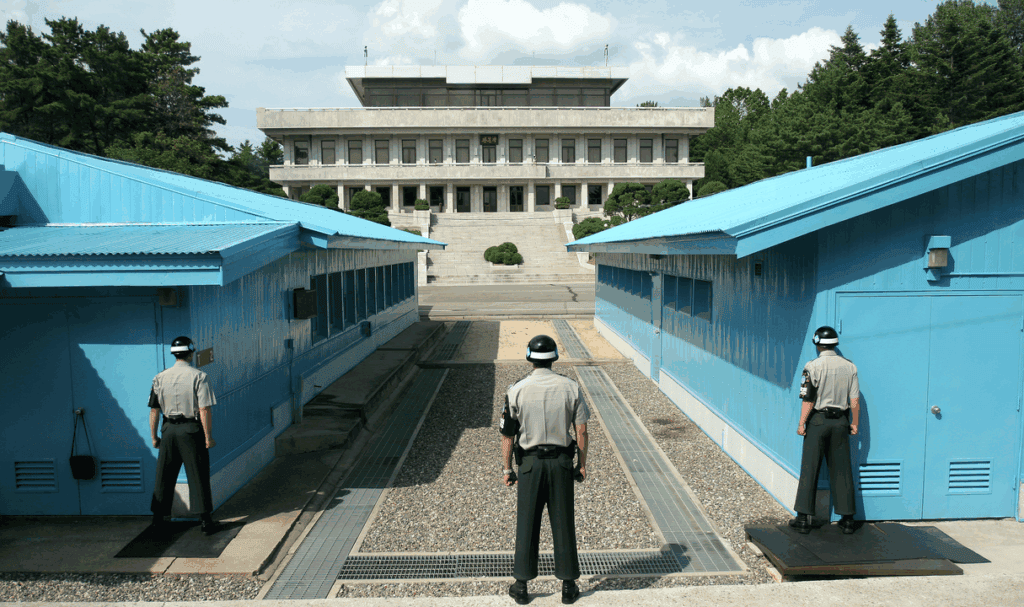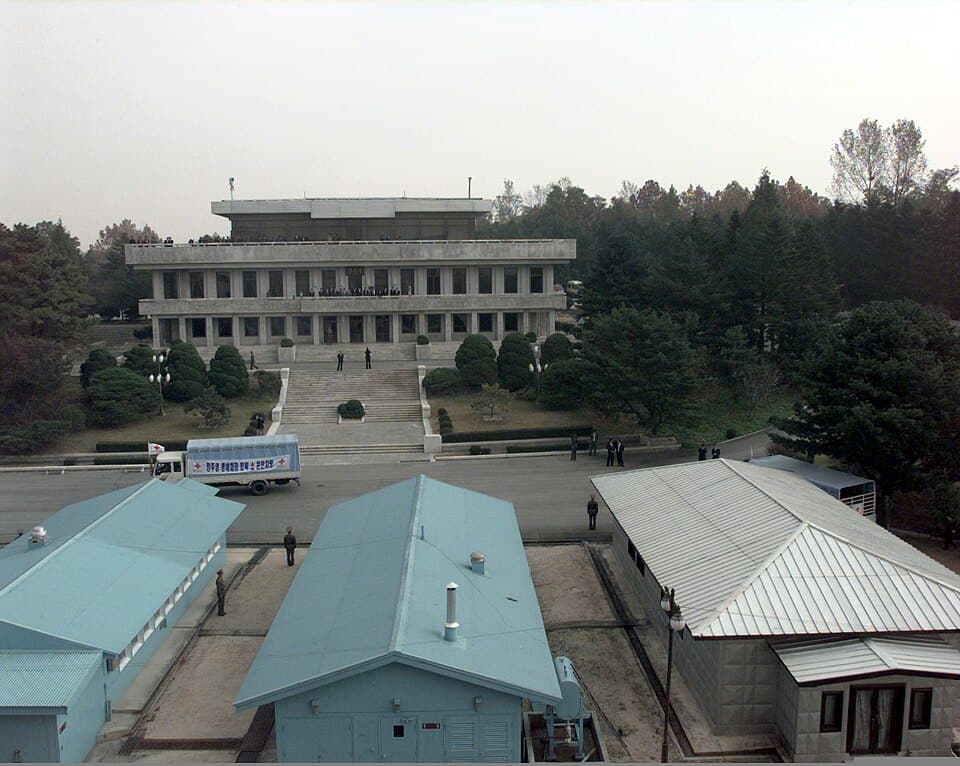We may earn money or products from the companies mentioned in this post. This means if you click on the link and purchase the item, I will receive a small commission at no extra cost to you ... you're just helping re-supply our family's travel fund.

Few places in the world carry tension as quietly as the border between North and South Korea.
The Demilitarized Zone, known simply as the DMZ, cuts across the Korean Peninsula like a line drawn through history.
Standing there, you feel both the beauty and the weight of it.
It looks peaceful, almost ordinary, but every blade of grass and stretch of barbed wire holds decades of silence and memory.
The Road to the Border

The drive from Seoul to the DMZ is short but heavy with anticipation.
The city gives way to open fields and quiet roads, and the air begins to change.
Watchtowers rise above the riverbanks. Barbed wire follows the water’s edge for miles.
Military checkpoints appear at regular intervals, each one a reminder that you are moving toward one of the world’s most guarded places.
Conversation in the bus fades to whispers. Even those who came out of curiosity begin to feel the gravity of where they are headed.
The First Glimpse

When you finally see the DMZ, it is not what you might expect.
It is green, wide, and alive with birds and wildflowers.
The land has been untouched for decades, making it one of the most unexpected nature reserves on Earth.
It is strange to think that peace, in this case, exists because of separation.
At the Dora Observatory, visitors peer through binoculars toward North Korea.
In the distance, there are small buildings, a tall flagpole, and quiet farmland that looks almost frozen in time.
It feels surreal, watching life on the other side of a line that few will ever cross.
The Blue Buildings of Panmunjom

The Joint Security Area at Panmunjom is the most famous section of the DMZ.
Here, the division is clear and visible, marked by a simple strip of concrete that runs between two nations still technically at war.
On the southern side, a South Korean soldier stands in quiet attention.
A few meters away, a North Korean soldier mirrors him. Neither moves. Neither speaks.
Between them are small blue conference buildings used for official talks.
Inside, a single table stretches across the border. Step around it, and for a moment, you stand in both Koreas at once.
The silence inside is almost physical. Every breath feels measured, every movement deliberate.
The Silence of History
The Korean War never officially ended.
The armistice signed in 1953 paused the fighting but never declared peace.
That fact hangs over everything here. It turns the landscape into a living reminder of unfinished business.
Yet within the boundaries of the DMZ, life has quietly returned.
Wild deer and cranes roam the hills. Flowers bloom where battles once raged.
Nature does not care about borders, and in that way, the DMZ has become both a wound and a refuge.
The Human Side
For Koreans, the DMZ is not just a landmark. It is personal.
It represents families divided, homes lost, and stories cut short.
Many South Koreans visit hoping to glimpse the land where their parents or grandparents were born.
For them, the view north is not abstract. It is a piece of family history locked away behind fences.
Guides speak gently when they tell these stories. The emotion in their voices fills the silence that the politics cannot.
Even as an outsider, you cannot help but feel it. The stillness carries more weight than any monument ever could.
A Fragile Balance
The DMZ looks peaceful, but it is peace with conditions.
Every tower, camera, and soldier exists to prevent mistakes.
The balance here is fragile, maintained through constant attention.
You can feel that in the air, in the measured movements of the guards, and in the invisible tension that hovers above the ground.
Yet life carries on. The grass moves in the wind. Birds call from the trees.
It is a strange coexistence between beauty and caution.
Leaving the DMZ
The drive back to Seoul feels lighter, though the silence lingers.
It takes time to process what you have seen, the contrast between the calm landscape and the history it holds.
The DMZ is quiet, but it speaks in its own way. It reminds you that peace is not always loud or final.
Sometimes it exists in waiting, in vigilance, in the space between what was and what could be.
To stand at the edge of the DMZ is to feel the pulse of history under your feet.
It is to understand that even in stillness, the story of a place can continue to move.